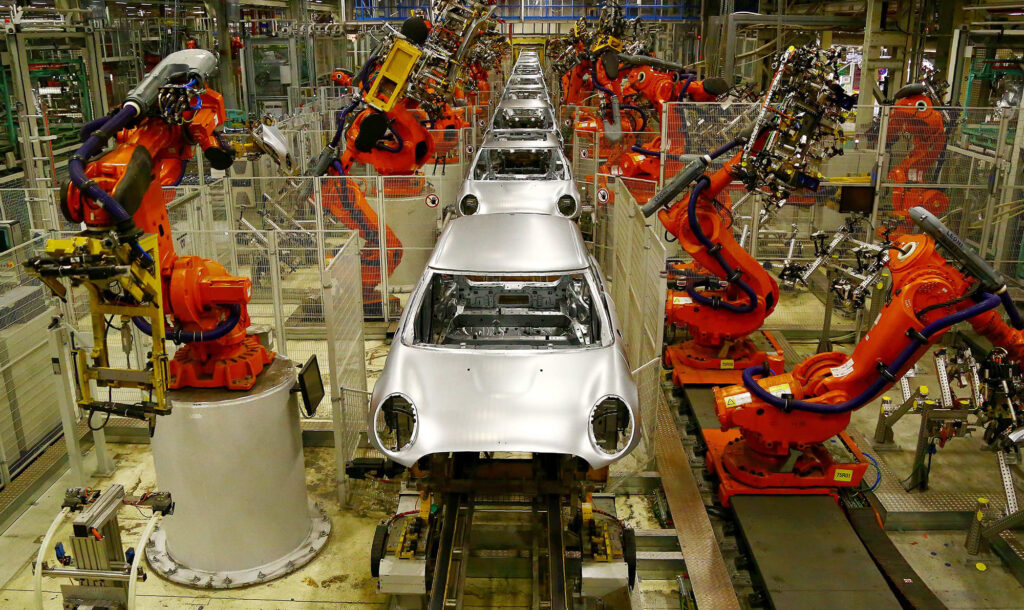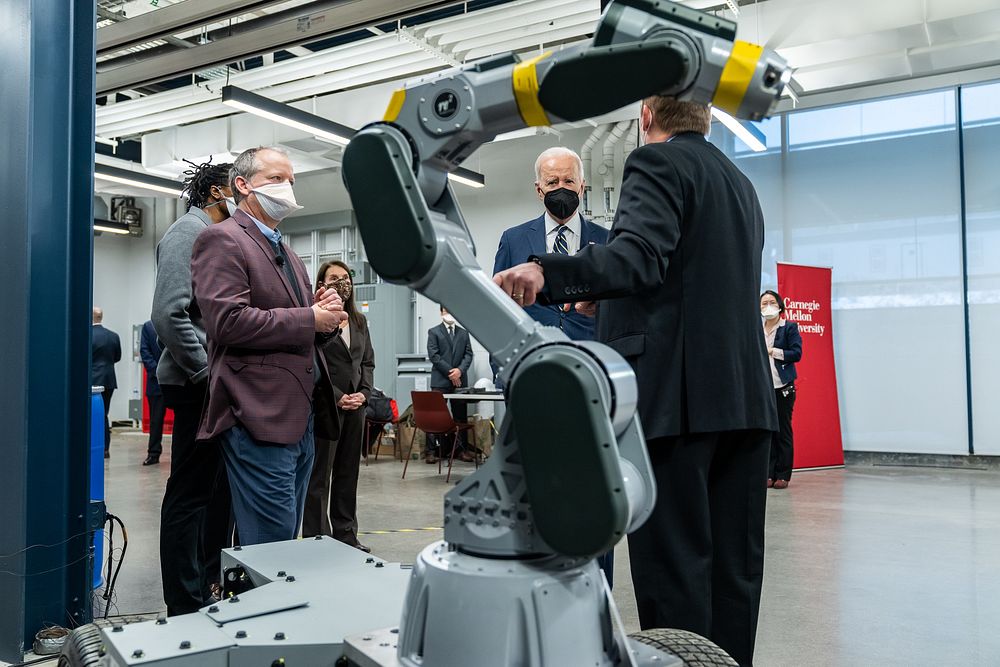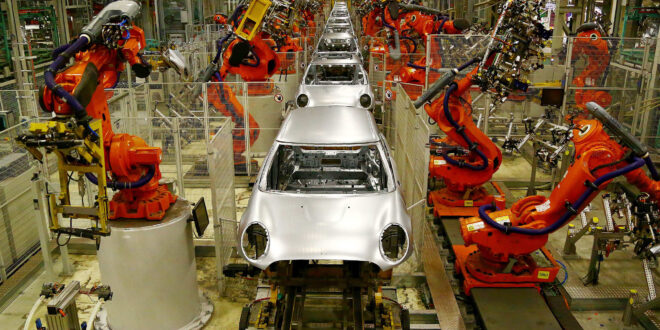by Matthew Li

Robotic arms work on the bodyshells of Mini cars as they pass along a section of automated production line at the BMW Mini car production plant in Oxford, west of London.
In the ever-evolving field of manufacturing, robotics has arisen as a powerful force in revolutionizing the way products are made. With advancements in automation and artificial intelligence, robots are transforming traditional manufacturing processes and enabling new industrial applications that drive productivity, improve quality control, and unlock innovative possibilities.
Robotic systems have proven to be highly efficient in performing repetitive tasks with precision and consistency. They can handle complex operations such as assembly, welding, and assembly in speed and accuracy that surpass human capabilities. By taking over these tasks, robots free up human workers for more complex works, leading to increased productivity and improved overall efficiency in manufacturing processes.
One significant advancement in robotics is the emergence of collaborative robots, or cobots. Unlike traditional industrial robots that operate separately from humans, cobots are designed to work alongside human workers sharing the same workspace. Cobots have advanced sensors and safety features that enable safe interaction with humans. They can assist in tasks that require dexterity, delicate handling, or human supervision, fostering human-robot collaboration and creating more flexible manufacturing environments.

Like cobots, Autonomous Mobile Robots (AMRs) have gained popularity in the world of tech, especially in manufacturing facilities for material handling and logistics tasks. These robots are equipped with sensors, cameras, and mapping capabilities, allowing them to navigate through dynamic environments autonomously. AMRs can transport materials, deliver components, and optimize inventory management, reducing manual labor and streamlining internal logistics processes.
Robotic vision systems and AI algorithms are transforming the quality control and inspection in manufacturing. They can allow precise defect recognition, visual inspections, and precise measurements, ensuring quality uniform products. Additionally, robotics customization and flexibility allow for efficient handling of personalized and small batch production, meeting the customers demands without sacrificing efficiency or increasing costs. This addition revolutionizes the manufacturing processes, enhancing quality control and enabling customizable production.
The integration of robotics in manufacturing is revolutionizing the industry, enabling increased efficiency, precision, and flexibility. From traditional industrial robots to collaborative cobots and autonomous mobile robots, these advanced technologies are reshaping production processes, improving quality control, and driving innovation. As robotics continues to evolve, manufacturers can expect further advancements that will optimize operations, enhance productivity, and unlock new possibilities in the world of manufacturing.
 Tempus Magazine By Students, For Students
Tempus Magazine By Students, For Students 

